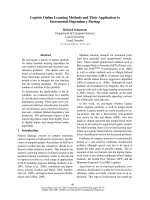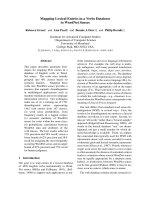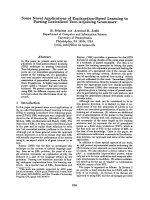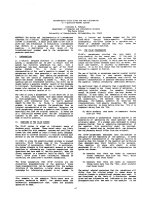báo cáo khoa học: " Safe using messages may not be enough to promote behaviour change amongst injecting drug users who are ambivalent or indifferent towards death" ppsx
Bạn đang xem bản rút gọn của tài liệu. Xem và tải ngay bản đầy đủ của tài liệu tại đây (224.01 KB, 8 trang )
BioMed Central
Page 1 of 8
(page number not for citation purposes)
Harm Reduction Journal
Open Access
Research
Safe using messages may not be enough to promote behaviour
change amongst injecting drug users who are ambivalent or
indifferent towards death
Peter G Miller
Address: School of Psychology, Faculty of Health, Medicine, Nursing and Behavioural Sciences, Deakin University, Waterfront campus, Level 3, 27
Brougham Street, Geelong, Victoria 3217, Australia
Email: Peter G Miller -
Abstract
Background: Health promotion strategies ultimately rely on people perceiving the consequences
of their behaviour as negative. If someone is indifferent towards death, it would logically follow that
health promotion messages such as safe using messages would have little resonance. This study
aimed to investigate attitudes towards death in a group of injecting drug users (IDUs) and how such
attitudes may impact upon the efficacy/relevance of 'safe using' (health promotion) messages.
Methods: Qualitative, semi-structured interviews in Geelong, Australia with 60 regular heroin
users recruited primarily from needle and syringe programs.
Results: Over half of the interviewees reported having previously overdosed and 35% reported
not engaging in any overdose prevention practices. 13% had never been tested for either HIV or
hepatitis C. Just under half reported needle sharing of some description and almost all (97%)
reported previously sharing other injecting equipment. Many interviewees reported being
indifferent towards death. Common themes included; indifference towards life, death as an
occupational hazard of drug use and death as a welcome relief.
Conclusion: Most of the interviewees in this study were indifferent towards heroin-related death.
Whilst interviewees were well aware of the possible consequences of their actions, these
consequences were not seen as important as achieving their desired state of mind. Safe using
messages are an important part of reducing drug-related harm, but people working with IDUs must
consider the context in which risk behaviours occur and efforts to reduce said behaviours must
include attempts to reduce environmental risk factors at the same time.
Background
Injecting drug users (IDUs) experience higher rates of
death and poorer health than their non-injecting peers.
IDUs are between 6 and 20 times more likely to die than
their non-heroin-using peers of the same age and gender
[1]. Death due to suicide among heroin users occurs at 14
times the rate of matched peers [2]. The major type of her-
oin-related mortality and morbidity is heroin-related
overdose. At the time of this study, the number of deaths
attributed to opioid overdose in Victoria had risen from
49 in 1991 to 331 in 2000. In Australia, around a quarter
of heroin users report having experienced an overdose in
the past 6 months, and over 70% reporting having wit-
nessed an overdose in the previous 12 months [3-5]. The
Published: 25 July 2009
Harm Reduction Journal 2009, 6:18 doi:10.1186/1477-7517-6-18
Received: 6 January 2009
Accepted: 25 July 2009
This article is available from: />© 2009 Miller; licensee BioMed Central Ltd.
This is an Open Access article distributed under the terms of the Creative Commons Attribution License ( />),
which permits unrestricted use, distribution, and reproduction in any medium, provided the original work is properly cited.
Harm Reduction Journal 2009, 6:18 />Page 2 of 8
(page number not for citation purposes)
other major cause of mortality and morbidity in IDUs is
the transmission of blood-borne viruses (BBVs), most
usually HIV and hepatitis C (HCV). The high prevalence
of HCV infection, and the increased infective ability of
HCV in comparison to HIV, makes sharing of all forms of
drug paraphernalia, not simply needles, a high-risk prac-
tice [6]. In addition to the risk of overdose and BBV trans-
mission, environmental factors such as the illicit status of
heroin, stigmatisation of IDUs and barriers to effective
treatment maximise the consequences of risky behaviour.
These factors combine to create an environment where
death and disability are common occurrences for IDUs
and this study seeks to document IDU attitudes towards
death and the relationship between these attitudes and
health promotion strategies.
Health promotion strategies (such as health education pro-
grams) have shown some success in the general population
and much of this thinking has influenced the programs
implemented with IDUs such as 'safe using messages'
aimed at preventing overdose and BBV transmission. How-
ever, there is a small, but growing, literature which docu-
ments examples of when human desires and preferences
mean that health behaviour is prioritised lower than other
considerations. This has been seen in regard to the use of
condoms [7,8], dietary habits [9,10] and smoking [11,12].
The majority of interventions targeted at overdose have
revolved around 'safe using messages'. Typical messages
include: 'don't mix your drugs', 'split the dose', 'always use
with a friend', 'use where you can be found' and 'watch your
tolerance' [13]. Whilst there is abundant literature describ-
ing program implementation of safe using messages, there
are no evaluative studies of such strategies. The main inter-
vention targeted at reducing BBV transmission has been
needle and syringe programs (NSPs) and their associated
safe using messages. Such messages include: 'don't share
needles', don't reuse needles' and 'don't share other inject-
ing equipment'. Because of the logically combined nature
of these interventions, the effectiveness of health promo-
tion messages alone remains untested, but such programs
appear to have limited success in reducing some harms
compared to others, especially in relation to overdose pre-
vention and HCV transmission. While there have been
some investigations around risk behaviour in marginalised
groups [e.g. [14,15]], these studies have not investigated
the role of attitudes towards death and how indifferent atti-
tudes affect the relevance of health promotion messages.
This study sought to understand some potential barriers for
IDUs acting on health information, investigating their atti-
tudes towards drug taking and death and how such atti-
tudes may impact upon the effectiveness of safe using
messages.
IDUs' attitudes towards risk
Most IDUs report never or rarely worrying about overdose
or BBV transmission (excluding HIV/AIDS) [14,16].
Though not well studied, prior studies have also shown
that engaging in high risk behaviours does not necessarily
mean that someone has a reduced fear of death [17]. In
some instances, individuals will act to minimise risk that
is an unavoidable part of their environment, while still
engaging in risky behaviours. For instance, crashes and
death in serious recreational cyclists, a pursuit that
involves regular brushes with death, are viewed as inevita-
ble or unavoidable and are seen as 'occupational hazards'
[18]. Although the high level of danger is constant, cyclists
are not actually 'death cheaters'. Rather, "due to the una-
voidably risk-laden nature of the activity, the subculture
of cycling has incorporated the dangers of riding in ways
that inextricably linked them to the very enactment of that
life, the bike life" [[18]: 169]. Many risk takers, (e.g. para-
chutists and cyclists) often carefully try to reduce the risk
as far as possible, but in some cases, such as cyclists, envi-
ronmental factors such as the dominance of cars on the
road, mean that the hazards they are exposed to are sub-
stantially increased and beyond their control. Similar atti-
tudes have been theorised for soldiers in conflict
situations, particularly those from lower class back-
grounds [19,20]. In their case, it has been suggested that
indifference towards death is socially constructed through
the dual masculinised roles of both "a man" who carries
arms, trained to kill and to cope with the death of a close
friend, or a "real man" who takes care of, and provides for,
his family [19]. Both roles ultimately view death as an
occupational hazard, though, like cyclists, they are not
indifferent to their fates and take all reasonable precau-
tions.
The Social Risk Environment
The perception of risk is highly contextual and it is worth
considering that risk can not only be enjoyed or avoided,
it can also be ignored. For example, Plumridge and Chet-
wynd [21] also observed that, for some of their sample,
risk was not denied or overridden, but acknowledged.
This can also be affected by the individual's self con-
structed identity and the social environment they inhabit.
They noted that IDUs can inhabit "a social world in which
there was very little sense in which anything other than
drug taking provided a raison d'etre" [21].
People are often driven by ambivalent and confused
motives, such as a desire to achieve relief from pain or to
escape an unbearable situation [15,21,22]. While most
individuals will reject the role of social/structural determi-
nants on their behaviour, preferring individualistic expla-
nations that affirm self-efficacy [21,23], research
consistently identifies how the social and structural envi-
ronment we inhabit influences our behaviour, particu-
larly in relation to drugs [23,24]. Specifically, the
relationship between poverty, its consequent marginalisa-
tion and risky drug-taking behaviour is well documented
[25,26].
Harm Reduction Journal 2009, 6:18 />Page 3 of 8
(page number not for citation purposes)
This relationship is even stronger when urban deprivation
is found in combination with vulnerability and trauma
[27,28]. Deprived urban settings are often violent and
depressed contexts in which hope of attaining socially
ordained norms such as career, wealth and status are only
attained by the token few. In such settings, risk and death
can be less unattractive than a desire to relieve existential
pain, or escape a sense of hopelessness [29]. Importantly,
such drug use and attitudes towards risk reflect the reality
that drug use can be functional, pleasurable, problematic
and dangerous at the same time [26]. Within such a per-
sonal and social milieu, reduction of harm may not be pri-
oritised.
Methods
Sixty heroin users were interviewed over a six week period
in April/May 2000 at two needle and syringe programme
(NSP) sites in Geelong, Australia. The sample was a con-
venience sample and interview subjects were recruited
using contact cards handed out by outreach workers, NSP
workers and ambulance paramedics attending overdose
events. The recruitment card informed potential partici-
pants that interviews were about risk and heroin use. To
be eligible for the study, subjects had to have used heroin
in the previous month. Interviews were conducted in
interview rooms provided by Barwon Health Drug and
Alcohol Services. Ethical clearance was granted by both
Deakin University Human Research Ethics Committee
and Barwon Health Research Ethics Committee. Access to
counselling was provided if required as well as referral for
other support services. No interviewees requested coun-
selling, although one interviewee was referred to the local
psychiatric service following a suicide attempt. Subjects
were reimbursed $20 per interview.
Qualitative, semi-structured interviews were used and
interviewees were encouraged to talk freely of their expe-
riences and opinions. General discussion topics of interest
were listed on a checklist to ensure all interviewees views
were sought on each topic. Discussions were not struc-
tured in any particular order and topics were ticked off as
mentioned in the normal course of the more general dis-
cussion. All interviews were recorded and transcribed ver-
batim. Interviews took between 20 and 95 minutes and
subjects were required to use a pseudonym to ensure ano-
nymity. Participants were asked about overdose patterns,
blood-borne virus behaviour, suicidality and attitudes
towards death [29-31]. They were specifically asked about
their risk behaviours, attitudes toward death, whether
they had ever attempted suicide and were engaged in sub-
sequent conversation regarding details on each topic such
as triggering events and other contextual details. While the
study also looked at suicidal thoughts and behaviour,
these findings are presented elsewhere [29]. All questions
were read out during the interview.
Setting
Geelong is a city of approximately 205,000 people with a
growth rate of 1.1% per annum. Located 70 kilometres
from Melbourne, it is both a regional centre and a suburb
of Melbourne. Geelong is traditionally and industrial and
port town, but has seen massive decline since the 1970s
and now has few large manufacturers remaining. This
working class basis and subsequent decline in employ-
ment has seen a raft of social problems over the past 3 dec-
ades, with alcohol, drugs and drug-related violence
featuring prominently on the social landscape. A number
of traditional working-class suburbs have become domi-
nated by social housing, unemployment and social secu-
rity dependence. Most interviewees reported currently
living in these suburbs, although it is unclear how long
they have lived there and over half reported unstable
housing.
Analysis
Statistical analysis was conducted with SPSS and qualita-
tive data was analysed using NVivo. The narratives in this
article result from thematic categorisation. Thematic anal-
ysis is an inductive design where, rather than approach a
problem with a theory already in place, the researcher
identifies and explores themes which arise during analysis
of the data [32]. In this analysis, once a theme became evi-
dent, all transcripts were reanalysed for appearances of the
theme. Categorisation was not exclusive and some narra-
tives appeared in many themes. Categories are added to
reflect as many of the nuances in the data as possible,
rather than reducing the data to a few numerical codes
[33]. All the data relevant to each category were identified
and examined using a process called constant compari-
son, in which each item is checked or compared with the
rest of the data to establish analytical categories. For the
sake of transparency, results reported are enumerated
[34]. Where available, narratives which present opposing
viewpoints will also be presented [35].
Limitations
The aim of this article is not to present an exhaustive anal-
ysis of this data, but to offer some insights on indifference
and injecting drug use using this qualitative material. To
this end, and considering the relatively small sample size,
the findings presented here are not generalisable. In addi-
tion to this, the thematic coding undertaken was con-
ducted by a single researcher and may therefore be open
to interpretation. The study is also limited in terms of its
limited geographical range and the possibility that differ-
ent localities will carry different cultures around risk,
although this was not evident in the available compari-
sons such as rates of overdose and needle-sharing. The
study also lacked a stated sampling frame, simply using a
convenience sample of people who attended NSPs. It is
possible that more a more structured sampling frame,
combined with a larger sample, may have identified dif-
Harm Reduction Journal 2009, 6:18 />Page 4 of 8
(page number not for citation purposes)
ferences within sub-groups of IDUs in relation to risk
behaviour and attitudes towards death.
Finally, the study ultimately relied on self report. While
self report has been found reliable in relation to behav-
iours which are able to be measured though other means
[36], it is unwise to assume that self report will be reliable
for all aspects of a person's behaviour. In particular, when
talking about death and risk, it is possible that a number
of interviewees displayed some bravado or other reasons
for reporting in a socially constructed manner. Previous
research has identified that there are many factors which
might affect the way in which interviewees wish to present
themselves. Interviews are firstly a socially interactive
enterprise. "Evidence of such reflexive organisation of the
self can be seen in individuals' sensitivity to social circum-
stance and sanction in relation to their identities' [21].
Motivations can include the preservation of personal self
constructions such as heroic individualism, responsibil-
ity, maturity, courage or weakness which ultimately reflect
their sense of moral worth. Ultimately, interview accounts
are constructed by actors interested in achieving certain
social effects in their story-making concerning identity,
reflexive biography and, for the purpose of this study,
agency concerning risk management and attitudes
towards death [37,38]. On the other hand, it is worth con-
sidering that most self report data has aligned with other
research evidence [21].
Results
Most of the interviewees (n = 36) were male (see Table 1).
The average age of interviewees was 28.1 years old (range
15–51 years). All interviewees had used heroin within the
past week and most reported that their main 'drug of
choice' was heroin. Over half (53%) of interviewees were
not currently in treatment and 30% were in methadone
maintenance treatment (MMT).
Overdose experiences and prevention
Over half of the 60 interviewees (n = 35, 58%) report hav-
ing previously overdosed, with an average of 4 (SD = 3.79)
previous overdoses. Thirty two percent (n = 19) of inter-
viewees reported doing nothing to prevent overdose.
BBV experience and risk behaviours
Interviewee behaviour regarding testing and risk behav-
iour around BBVs can be seen as possible indicators of the
behaviours are able to engage in if they are not ambivalent
towards their own fate, as well as a measure of the harm
they have already experienced. A substantial proportion of
interviewees were unaware of their HIV or HCV serostatus
(13% and 10% respectively). Over half (54%, n = 32)
were HCV positive and none were HIV positive. Around
one in five of the interviewees in this study self-reported
both ever borrowing someone else's needle (18%) and
lending their needle to someone else (22%).
Attitudes towards Death
Two questions about death were asked. The first question
asked the participant whether or not they ever talked
about death with their peers. Most (84%, n = 50) reported
that they never talked about death, although 3% (n = 2)
reported that they often discussed death as a possible con-
sequence of their heroin use. Interviewees were also asked
how they felt about death and whether they were afraid of
dying. The vast majority (82%, n = 49) stated that they
were never afraid of dying, 12% (n = 7) said that they were
afraid of dying from some causes other than heroin use
(i.e. car accident) and 3% (n = 2) of the interviewees
reported that they were often afraid of dying. Narrative
responses showed that almost half of the interviewees (n
= 28) were either indifferent or fatalistic about death.
Wayne, 51 yrs, Well, I surely don't want to die, but it
doesn't make me not want to use. If it did I wouldn't use
any more, because I've dropped a few times. It hasn't fright-
ened me off enough. I know if I die, I'll just go to sleep any
way, I just don't wake up.
Table 1: Summary Statistics
Mean Age (range) yrs 28.1 (15–51)
Median Age yrs 26.0
N Male (%) 36 (60%)
Education, N (%)
- year 10 or less N (%) 33 (55%)
- commenced university 3 (5%)
Employment, N (%)
-unemployed 36 (60%)
-pension/disability support 12 (20%)
-part-time employed 9 (15%)
-students 3 (5%)
Accommodation, N (%)
-homeless 22 (36%)
-rental 19 (32%)
Drug of choice, N (%)
- Heroin 55 (92%)
- Amphetamines 3 (5%)
- Cannabis 2 (3%)
Heroin Use Duration
-Mean (SD) 7.4 yrs (7.37)
-Range 1–30 years
Treatment, N (%)
-not in treatment 32 (54%)
-methadone maintenance 18 (30%)
-counselling 6 (10%)
Overdose:
- At least once 35 (58%)
- mean (SD) 4 (SD = 3.79)
-median 3
-range 1–15
Blood borne viruses:
- HIV tested 54 (90%)
-HCV tested 52 (87%)
- HIV +ve 0
- HCV +ve 32 (54%)
- HBV +ve 2 (3%)
Harm Reduction Journal 2009, 6:18 />Page 5 of 8
(page number not for citation purposes)
Wayne's narrative provides an example where overdose
death is perceived to be a comparatively pleasant experi-
ence. This attitude can be seen in its extreme form in the
following narrative.
Casey, 15 yrs, I reckon that was the best feeling, overdosing.
The best feeling ever. The first time I ever felt so stoned. It
was just the best feeling ever. There was a time when I was
apparently dead. It was grouse, I felt like a was asleep and
I was just going through this full trippyness. It was the best
feeling.
Casey's narrative holds a number of insights into both the
motivation for risky heroin use, but also could be an
example of the bravado expressed by a young person dis-
cussing a frightening experience. In the context of a
research interview, and the complexities of such a social
interaction, it is probable that both elements are at play.
Ten interviewees also reported indifference towards both
life and death.
Peter, 28 yrs, sometimes it gets too much. You're broke all
the time. You haven't got a roof over your head or you
haven't got money for food. You just get sick of the lifestyle.
It's a real bugger because it's something you love but you get
discriminated against. You know, the way people treat you,
even your family. It [heroin overdose] would be a good way
to go, better than cancer.
Peter's narrative points to many factors related to poverty
and urban deprivation, in addition to dependence on her-
oin. Peter is also clear that the consequences he identifies
are primarily social or societal in their origin, including a
lack of accommodation, the lack of money or food, and
more general discrimination, which are also mostly out of
the control of the individual IDU. Such narratives suggest
that poverty and urban deprivation play a role in IDUs
attitude towards life, death and risk.
Another major theme to arise from the narratives (n = 8)
was that death was an occupational hazard of heroin use.
Frank, 24 yrs, I think that people who use accept that as one
of the risks. You just cop it on the chin.
Joe, 31 yrs, nearly every time, I know its Russian roulette.
Sometimes pills. Also some speed, usually hammer first,
then speed. Dropping is really an occupational hazard.
When your number's up, your number's up. Why worry
about it. It's just as likely that you'll have a good whack and
then walk across the road and get hit by a truck.
Finally, not all interviewees exhibited the above-described
attitudes towards death and three interviewees reported
that they were not indifferent towards death and did their
utmost to avoid death.
Bruce, 23 yrs, I mean, you talk about friends that have died
and that, but I don't really have any sympathy for them. It
sounds a bit harsh, but like I say, I've had a lot of friends
that have died from one way or the other, you know, but if
it's through the choices they made then that's their own
business, you know what I mean. I don't want my daughter
to know her whole life that her dad died a junkie.
David, 35 yrs, it is out of control in one sense but I don't
break into houses or anything like that. The only control I
have is to throw myself into an area where it's impossible to
get heroin. The best I can do is one day without. There use
an element of control I suppose, but it's not enough to break
free. I don't want to die. Either that or fail heroicly.
Worst Consequences
Interviewees were also asked what they believed would be
the worst consequence of experiencing an overdose. The
interviewees were then read a list of four possible alterna-
tives and asked to nominate one (death, brain damage,
police involvement or being woken up). The order of con-
sequences was randomly altered. Interviewees were also
able to identify other consequences from which three
more responses were identified (nothing, all and wasted
money).
Whilst thirteen interviewees reported that death was the
worst consequence of overdose, the majority (58%, n =
35) of interviewees identified brain damage as the worst
possible consequence of an overdose. Other responses
included 'Being woken up' (n = 5, 8.3%) and 'Police
Involvement' (n = 3, 5.0%). Whilst this finding is similar
to responses from non-IDU populations [39,40], it does
demonstrate that the majority of these interviewees clearly
identified that there was something worse than death. For
example:
Lisa, 25 yrs, I knew a guy who overdosed and ended up with
brain damage and he ended up brain dead and they turned
the machines off. That was pretty sad really. With my part-
ner, I think about it: is it bad for him to be here brain-dead
or with brain damage. I think I'd prefer them to die than
have brain damage, but then it's the people that they leave
behind. I think a lot of families go through a lot of shit. I
mean, it's hard to say. Here I am saying "these families go
through a lot of shit", but then I'll go and risk killing myself.
For me in an overdose, I'd prefer to die, than have fucking
brain damage.
The next most common response was 'being woken up'.
Damian, 29 yrs, Coming back with a fucking Narcan
headache. That's worse than anything I've ever had. I'd def-
initely rather be dead than brain damaged. It's part of the
game isn't it, guaranteed, you're born to die.
Harm Reduction Journal 2009, 6:18 />Page 6 of 8
(page number not for citation purposes)
Debbie, 22 yrs, for me it was just waking up, that was the
pits. For the person overdosing the worst consequence is
waking up straight. If you've got people with you, you
shouldn't get brain damage. All they're concerned about is
the drugs and getting drugs and being stoned.
Discussion
The data presented above highlights that many interview-
ees did not see the possibility of dying as a reason to
reduce risk behaviours. Most experienced the conse-
quences of their risk behaviour regularly, yet few reported
engaging in safe using practices. Despite the fact that
death is a common occurrence in this group of people and
they engage in a behaviour that carries a risk of death
every day, most tend to repress their fear of death, treating
the likelihood of their death with either ambivalence or
indifference. It was apparent that when the effect desired
from drug use is on the verge of overdose/death, safe using
messages are unlikely to be of sufficient priority. For
example, telling an IDU to 'taste' their heroin prior to
using the whole amount makes little sense to someone
attempting to gain the maximum effect from the heroin
they possess. These findings raise questions about the
conclusions arising from the existing literature which
focuses on changing individual behaviour and suggests
support for interventions based on reducing environmen-
tal risk [41].
IDUs relationship with death
The major finding of the study is the high level of indiffer-
ence and fatalism displayed by many of the interviewees
towards their own death and the way in which social and
environmental factors such as poverty and marginalisa-
tion form the background for this indifference. The narra-
tives support the observations of previous research that
many of the interviewees were driven by ambivalent and
confused motives [22]. In particular, it was observed that
for some IDUs, their death is an event which is viewed
with some dispassion and taking measures to try to avoid
the death can appear to be the equivalent of 'avoiding the
unavoidable'.
The narratives presented also lend weight to the proposal
that indifference towards death may turn out to be a
rationally based response to "social isolation, meaning-
lessness and anomie, so characteristic of social life in the
20th century" [[42]: 715]. They point to the reality that in
the lived experience of these IDUs where "health may be
accorded a relatively low priority by individuals suffering
psychological difficulties or social deprivation" [[43]:
223]. Indeed, it is implicit in these narratives that many of
the interviewees inhabited a social sphere where there was
very little in their lives that supplied meaning apart from
substance use, similar to that proposed by Plumridge and
Chetwynd [23].
Indifference might also be seen as a matter-of-fact
response to the very high death rate amongst heroin users,
but can also be viewed as fatalistic. Accepting risk as an
'occupational hazard' may tacitly be denying any sense of
agency towards risk behaviour and may result in IDUs not
engaging in risk avoidance behaviours. However, the idea
of an occupational hazard is common amongst other
groups within Western society that engage in high levels
of risk behaviour. As seen in Albert's investigation of risk
and injury in serious recreational cyclists [18], the concept
of occupational hazard is employed widely to deal with
situations which, on-the-whole, have little to do with the
individual's behaviour and are more related to societal
norms surrounding automobile use. The concept of death
as an occupational hazard attitude is also reflected in
some discourses of soldiers in wartime settings
[19,20,44]. However, the literature on attitudes towards
death in wartime soldiers emphasises more strongly the
conflict-laden nature of such attitudes, particularly in rela-
tion to dual roles of masculine provider and citizen. The
narratives from interviewees in this study also referred to
conflicting elements of their life, most particularly the
need to feed their habit while staying alive. From this sam-
ple, it was difficult to draw any inferences about gender
roles in this regard, although a confrontational attitude
towards death was more apparent in men. However, the
clearest parallel was the maintenance of the self image in
a hostile environment, where heroin use was viewed as a
personal behaviour that was made life threatening
because of the drug's legal status.
In the context of drug prohibition inhabited by these
interviewees, heroin use has an 'unavoidably risk-laden
nature' which leaves the IDU no other option than to rea-
sonably accept death as an occupational hazard of heroin
use [15,41]. Thus, it appears somewhat incongruous to
suggest that IDUs should use in a safe environment when
no such environments exist and illustrates the logic of
environmental interventions such as safe injecting facili-
ties. On the other hand, it is also evident that some IDU
are neither socially marginalised nor will they choose to
use such safe environments, and that the intersection
between risk, pleasure, escape and indifference means that
reducing harm is not a priority.
The narratives of interviewees have also suggested how
such societal factors can impact on a person's indifferent
state and have illustrated the link between the mental
state of the individual, the high cost of heroin and, by
association, current drug policy. Similarly, the recognition
by the individual that they are realistically unable, to
change situations for themselves, ultimately leads to indif-
ferent and fatalistic attitudes towards their own well-
being. When individuals are dislodged from the social
fabric of society, or have their aspirations consistently
Harm Reduction Journal 2009, 6:18 />Page 7 of 8
(page number not for citation purposes)
thwarted, they are more likely to hold indifferent attitudes
towards their death [45]. This was evident in those inter-
viewees who reported being ambivalent towards life as
much as being indifferent towards death. Such attitudes
have often been documented in socially and economically
deprived urban areas [24,25]. It was also reflected in some
responses which relayed a sense of bravado towards death
and risk, although the process through which individuals
developed such responses and the implications that such
attitudes have for understanding their attitudes towards
death are most probably derived from a combination of
an individual interpreting past events in a way which
allows maintenance of self image, as well as the telling of
their story which reflects the same goal. Far beyond simple
epidemiological correlations, ethnographic work has
demonstrated how complex economic, social and cultural
factors interact to create situations where drugs become a
central part [15]. In such a social environment, "people
who are using don't care". These findings suggest that
beyond investigating and treating drug use, "poverty and
deprivation warrant intervention in their own right" [26].
Conclusion
Most of the interviewees in this study were indifferent
towards heroin-related death. Whilst interviewees were
well aware of the possible consequences of their actions,
these consequences were not as important as achieving
their desired state of mind. Despite the fact that death is a
common occurrence in this group of people and they
engage in hazardous behaviour on a daily basis that car-
ries a risk of death, most treat the likelihood of their death
with either indifference or resignation. When marginal-
ised groups such as IDUs experience the 'existential angst'
observed in some of the narratives presented above, mes-
sages of harm reduction and health promotion may be of
little relevance.
These findings illustrate that it may be more important to
address the reasons behind this indifference than to
attempt to change behaviour. In the current drug policy
context of prohibition, discourses surrounding the
rational choice of IDUs to reduce the risk associated with
their drug use are sometimes simplistic and unrealistic. In
reality, many IDUs do not have a full range of choices of
how to reduce the risks associated with their drug use and
the discourses of choice espoused within safe using mes-
sages may ultimately fail to serve the drug user and the
wider community, encouraging 'victim blaming' thereby
further entrenching the marginalisation and fatalism of
IDU populations.
Competing interests
The author declares that they have no competing interests.
Authors' contributions
PGM conducted all elements of this study
Acknowledgements
Special thanks to Associate Professor David Moore for comments on an
earlier draft of this paper. I would like to thank Kate Wisbey and Associate
Professor Liz Eckermann for their editorial assistance and overall guidance
and support, and Richard Marks, formerly of Barwon Health Drug Treat-
ment Services, for all his operational support in conducting this study. This
study was funded by a Deakin University Postgraduate Award Scholarship.
References
1. Darke S, Zador D: Fatal Heroin 'overdose': A Review. Addiction
1996, 91(12):1765-72.
2. Harris EC, Barraclough B: Suicide as an outcome for mental dis-
orders. British Journal of Psychiatry 1997, 170:205-228.
3. Dwyer R, Rumbold G: The Illicit Drug Reporting System
Project: Community Report. Melbourne: National Drug and
Alcohol Research Centre and Turning Point Drug and Alcohol Centre
Inc; 1999.
4. Darke S, Ross J, Hall W: Overdose among heroin users in Syd-
ney, Australia: I. prevalence and correlates of non-fatal over-
dose. Addiction 1996, 91:405-411.
5. Bennett GA, Higgins DS: Accidental overdose among injecting
drug users in Dorset, UK. Addiction 1999, 94:1179-1180.
6. Crofts N, Aitken CK, Kaldor JM: The force of numbers: why hep-
atitis C is spreading among Australian injecting drug users
while HIV is not. Medical Journal of Australia 1999, 171:165-166.
7. MacPhail C, Campbell C: 'I think condoms are good but, aai, I
hate those things': condom use among adolescents and
young people in a Southern African township. Social Science &
Medicine 2001, 52:1613-1627.
8. Latkin CA, Forman V, Knowlton A, Sherman S: Norms, social net-
works, and HIV-related risk behaviors among urban disad-
vantaged drug users. Social Science & Medicine 2003, 56:465-476.
9. Petersen AR: Risk and the Regulated Self: The Discourse of
Health Promotion as Politics of Uncertainty. Australian and
New Zealand Journal of Sociology 1996, 32:44-57.
10. Gough B: 'Real men don't diet': An analysis of contemporary
newspaper representations of men, food and health. Social
Science & Medicine 2007, 64:326-337.
11. Lawlor DA, Frankel S, Shaw M, Ebrahim S, Smith GD: Smoking and
ill health: Does lay epidemiology explain the failure of smok-
ing cessation programs among deprived populations? Ameri-
can Journal of Public Health 2003, 93:
266-270.
12. Vartiainen E, Korhonen HJ, Koskela K, Puska P: Twenty Year
Smoking Trends in a Community-Based Cardiovascular Dis-
eases Prevention Programme: Results from the North Kare-
lia Project. European Journal of Public Health 1998, 8:154-159.
13. Seal KH, Kral AH, Gee L, Moore LD, Bluthenthal RN, Lorvick J, Edlin
BR: Predictors and Prevention of Nonfatal Overdose Among
Street-Recruited Injection Heroin Users in the San Fran-
cisco Bay Area, 1998–1999. Am J Public Health 2001,
91:1842-1846.
14. Maher L, Dixon D, Hall W, Lynskey M: Running the Risks: Heroin,
Health and Harm in South West Sydney Sydney, N.S.W.: National Drug
and Alcohol Research Centre, University of New South Wales; 1998.
15. Moore D: Governing street-based injecting drug users: A cri-
tique of heroin overdose prevention in Australia. Soc Sci Med
2004, 59:1547-1557.
16. Zador D, Sunjic S, McLennan J: Circumstances and Users' Per-
ceptions of Heroin Overdose at the Time of the Event and at
One-Week Follow-Up in Sydney, Australia: Implications for
Prevention. Addiction Research & Theory 2001, 9:407-423.
17. Alexander M, Lester D: Fear of death in parachute jumpers. Per-
ceptual and Motor Skills 1972, 34:338.
18. Albert E: Dealing with Danger: The Normalization of Risk in
Cycling. International Review for the Sociology of Sport 1999,
34:157-171.
19. Sasson-Levy O: Military, masculinity, and citizenship: Tensions
and contradictions in the experience of blue-collar soldiers.
Identities 2003, 10:319-345.
Publish with Bio Med Central and every
scientist can read your work free of charge
"BioMed Central will be the most significant development for
disseminating the results of biomedical research in our lifetime."
Sir Paul Nurse, Cancer Research UK
Your research papers will be:
available free of charge to the entire biomedical community
peer reviewed and published immediately upon acceptance
cited in PubMed and archived on PubMed Central
yours — you keep the copyright
Submit your manuscript here:
/>BioMedcentral
Harm Reduction Journal 2009, 6:18 />Page 8 of 8
(page number not for citation purposes)
20. Britton D, Williams C: " Don't Ask, Don't Tell, Don't Pursue":
Military Policy and the Construction of Heterosexual Mascu-
linity. J Homosex 1995, 30:1-22.
21. Plumridge E, Chetwynd J: The moral universe of injecting drug
users in the era of AIDS: sharing injecting equipment and the
protection of moral standing. AIDS Care 1998, 10:723-734.
22. Neale J: Suicidal intent in non-fatal illicit drug overdose. Addic-
tion 2000, 95:85-93.
23. Plumridge E, Chetwynd J: Identity and the social construction of
risk. Sociology of Health and Illness 1999, 21:329-343.
24. Bourgois P: Search of Respect: Selling Crack in El Barrio 2nd edition.
Cambridge: Cambridge University Press; 2003.
25. Allen C: The poverty of death: social class, urban deprivation,
and the criminological consequences of sequestration of
death. Mortality 2007, 12:79-93.
26. Valentine K, Fraser S: Trauma, damage and pleasure: Rethink-
ing problematic drug use. International Journal of Drug Policy 2008,
19:410-416.
27. Aldridge J, Parker H, Measham F: Drug Trying and Drug Use
Across Adolescence: A Longitudinal Study of Young Peo-
ple's Drug Taking in Two Regions of Northern England. Lon-
don: Home Office/Drugs Prevention Advisory Service; 1999.
28. Parker H, Bury C, Egginton R: New Heroin Outbreaks Among
Young People in England and Wales. In Crime Detection and Pre-
vention Series Paper 92 London: Home Office; 1998.
29. Miller PG: Dancing with Death: The Grey Area between Sui-
cide Related Behaviour, Indifference and Risk Behaviours of
Heroin Users. Contemporary Drug Problems 2006, 33:427-453.
30. Miller P: Dancing with Death: Risk, Health Promotion and
Injecting Drug Users. In PhD thesis Deakin University, School of
Social Inquiry; 2002.
31. Miller PG: Scapegoating, Self-confidence and Risk Compari-
son: The Functionality of Risk Neutralisation and Lay Epide-
miology by Injecting Drug Users. International Journal of Drug
Policy 2005, 16:246-253.
32. Kellehear A: The Unobtrusive Researcher: A Guide to Methods St. Leon-
ards, NSW, Australia: Allen & Unwin; 1993.
33. Pope C, Mays N: Qualitative Research: Reaching the parts
other methods cannot reach: an introduction to qualitative
methods in health and health services research. BMJ 1995,
311(1 July):42-45.
34. Stenius K, Mäkelä K, Miovsky M, Gabrhelik R: How to Write Pub-
lishable Qualitative Research. Publishing Addiction Science: A Guide
for the Perplexed Second edition. 2008:82-97 [ />isajewebsite/isajebook2.htm]. Rockville, MD: International Society of
Addiction Journal Editors
35. Des Jarlais DC, Lyles C, Crepaz N, TREND Group: Improving the
Reporting Quality of Nonrandomized Evaluations of Behav-
ioral and Public Health Interventions: The TREND State-
ment. Am J Public Health 2004, 94:361-366.
36. Darke S: Self-report among injecting drug users: A review.
Drug and Alcohol Dependence 1998, 51:253-263.
37. Rhodes T, Cusick L: Love and intimacy in relationship risk man-
agement: HIV positive people and their sexual partners. Soci-
ology of Health & Illness 2000, 22:1-26.
38. Martin A, Stenner P: Talking about drug use: what are we (and
our participants) doing in qualitative research? International
Journal of Drug Policy 2004, 15:395-405.
39. Florian V, Mikulincer M: Fear of death and the judgment of
social transgressions: A multidimensional test of terror man-
agement. Journal of Personality & Social Psychology 1997, 73:369-381.
40. Lester D: Fear of death in suicidal persons. Psychological Reports
1967, 20:1077-1078.
41. Rhodes T: The 'risk environment': a framework for under-
standing and reducing drug-related harm. International Journal
of Drug Policy 2002, 13:85-94.
42. Kellehear A: Are we a 'death-denying' society? a sociological
review. Social Science and Medicine 1984, 18:713-723.
43. Kelly M, Charlton B: The Modern and the Postmodern in
Health Promotion. In The Sociology of Health Promotion: Critical Anal-
yses of Consumption, Lifestyle and Risk Edited by: Bunton R, Nettleton
S, Burrows R. New York, NY: Routledge; 1995:79-91.
44. Small N: Death and difference. Death, gender and ethnicity
1997:202.
45. Travis R: Suicide in Cross-Cultural Perspective. International
Journal of Comparative Sociology 1990, 31:3-4.

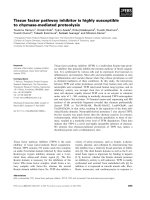
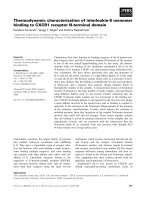
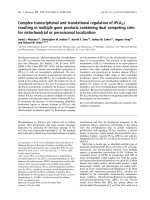
![Tài liệu Báo cáo khoa học: Specific targeting of a DNA-alkylating reagent to mitochondria Synthesis and characterization of [4-((11aS)-7-methoxy-1,2,3,11a-tetrahydro-5H-pyrrolo[2,1-c][1,4]benzodiazepin-5-on-8-oxy)butyl]-triphenylphosphonium iodide doc](https://media.store123doc.com/images/document/14/br/vp/medium_vpv1392870032.jpg)
